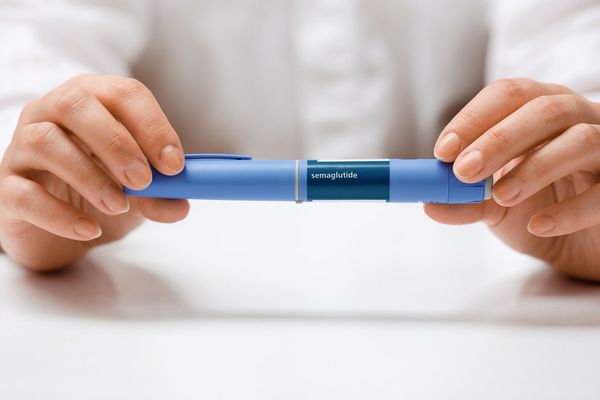April is Autism Acceptance Month.
Like many women with autism, Dana Waters had no idea she was autistic until she was an adult.
“We really do look different,” said the psychologist and professor at Antioch University in Seattle. “The assessment measures developed as the norm were based on young white boys. The problem with early autism measures is they’re mostly based on behavioral analyses from family and teachers, and they might not catch certain behaviors from girls and women.”
This may explain why boys and men are more likely than girls to be diagnosed with autism.
While autism diagnosis rates have risen significantly over the past decade, adult women have seen the most notable increase — rising by 315% for women compared to 215% for men.
While researchers don’t know if more people are developing autism, the rise in diagnoses is thought to be related to more people recognizing signs of autism in women and moving beyond longstanding gender biases in autism screening.
“With autism typically being thought of as a ‘male disorder,’ we missed a lot of females who fit the criteria but didn't display the stereotypical behaviors associated with the condition,” said Hannah Belcher, a lecturer and post-doctoral researcher at King’s College in London who was diagnosed with autism as an adult. “Females often show a more internalized presentation, meaning they are often missed or are dismissed as just ‘shy’ or ‘introverts.’”
For years, the male-to-female diagnostic ratio has been 4:1, but researchers believe it’s closer to 3:1. Other research suggests about 8 out of 10 autistic women remained undiagnosed at 18.
The “mask” hiding autism
Signs of autism in girls and women can include social difficulties, repetitive behaviors, sensory issues, struggles with executive function and self-regulation, and repetitive behaviors.
A young girl with autism might “mask” her traits through behaviors and movement that wouldn’t necessarily raise flags to outsiders, like nail picking, counting in her head or performing other cognitive repetitive tasks. In contrast, hyperactivity, blurting out statements and visual stimming — often seen in boys — are among the signals parents and teachers might identify as needing further investigation.
Belcher and Waters also noted that girls can be better at learning social scripts and behavior. Because they might have friendships, socialize with others and maintain eye contact — which are skills that are known to be tough for many people with autism — people often miss the signs that they have the condition.
“Girls are socialized from a young age to fit in with others, be polite, quiet and empathic,” Belcher said. “The [stereotypical] types of behaviors that go alongside autism are less well tolerated in girls, and hence they learn to hide them. Studies have shown women with autism need to present with a larger number of behavioral problems than their male counterparts to get a diagnosis, even when core traits are the same.”
Research also shows white children and children from more privileged socioeconomic backgrounds are more likely to be diagnosed with autism at earlier ages than children of color and those from less privileged socioeconomic environments.
Later diagnosis of autism can lead to worse outcomes
A childhood without a diagnosis can mean years of feeling like something is wrong but not knowing what. And those years of missing support and intervention services at critical stages of development can lead to worse physical and mental health well into adulthood. Treatment for the wrong conditions and a lack of treatment altogether are likely. Women and girls with autism are likely to have concurrent health issues, chronic pain, gynecological problems like dysmenorrhea (painful periods), and greater struggles with postpartum depression and menopause.
According to Belcher, autism isn’t often considered as a condition among girls and women until they seek help for other conditions, like anxiety, depression or eating disorders. Even then, they can be misdiagnosed, further delaying proper treatment and support. This may be a contributing factor to why suicide rates are also higher among women and girls with autism.
“Having a diagnosis can help you know why you are struggling and why you are different, and help you understand yourself better,” Belcher said.
Becoming AWAKE
“I was certainly one of the girls that blended in the woodwork,” Waters said. “I was one of those kids that fell through the cracks and did terribly in school. I just tried to hide and not get in trouble.”
Waters credits her sister with teaching her how to take notes and improve her study habits, which helped her finish her junior and senior years of high school with higher grades. She dropped out of college after three months, but returned later to earn an associate degree and become a veterinary technician. She said she enjoyed the job and performed well, giving her the courage to return to school five years later. This time, she developed a love for psychology, and got near-perfect grades in undergraduate and graduate school as she pursued that field.
Still, Waters didn’t think about autism until 2012, when one of her students told her he’d been diagnosed. Waters was surprised, thinking of popular culture depictions like Dustin Hoffman in “Rain Man,” or others who required significant physical and emotional support to complete daily tasks.
The more the student talked, however, the more she began to see some similarities in her own behavior. After taking an online quiz that left no doubt she might be on the spectrum, Waters said her wife even quipped “that makes a lot of sense,” when she shared her results.
“It felt a lot like my coming out process,” Waters said. “In hindsight you look and see things that were clear signs that I was autistic, but it was scary because even less was known about autism than there is now. Here I am, a clinical psychologist and I'm wondering, ‘Can I still do this?’ ‘Is this ok?’ ‘Are they going to take my license away?’ ‘What's going to happen?’”
Waters went for professional testing and received a diagnosis that confirmed the online test. She finally told her department chair in 2019, and he responded with a hug.
With support from her institution and others, Waters was ready to help other women. She founded The AWAKE Project to advocate for women with autism and has developed a thriving online community. She also is trained to diagnose patients in her private practice.
While the growing awareness of autism in adult women can help improve their quality of life, being able to get a diagnosis as early as possible can have a significant benefit on women’s long-term mental health.
“I have a lot of hope the zeitgeist is changing, especially with younger folks getting diagnosed and trying to destigmatize autism,” Waters said. “Even the discourse since I started The AWAKE Project is changing. My younger audience online is so ahead of me in the sense of understanding a neurodivergent mind, how it works and being able to help others.”







